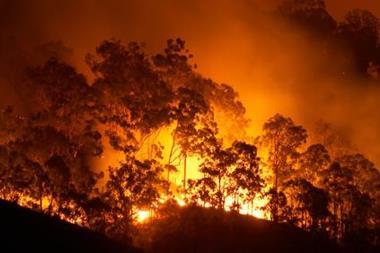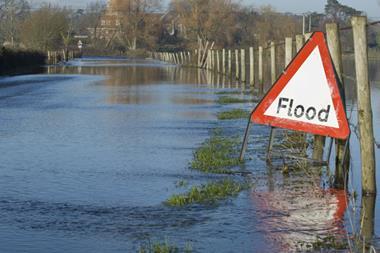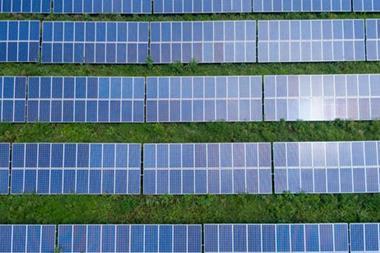Disregard for physical climate risks are a clear threat to resilient infrastructure
Earlier this year, the Intergovernmental Panel on Climate Change (IPCC) concluded in its Sixth Assessment Report that ‘global surface temperature will continue to increase until at least the mid-century under all emissions scenarios considered’. The more global warming we experience, the greater the changes to the climate system.
These changes include increases in frequency and severity of heatwaves, heavy rainfall, droughts, intense tropical cyclones and sea level rise. The are being felt across every region of the world and across all economic sectors, with the IPCC report revealing that approximately 3.3 to 3.6 billion people already live in “contexts that are highly vulnerable to climate change”.
However, impacts of climate change are not uniformly distributed across society; they disproportionately affect the poor and marginalised groups. Hence, designing infrastructure to ensure that it remains resilient in the face of climate change is becoming increasingly urgent.
According to the Global Infrastructure Hub, there is a projected $15 trillion shortfall in global infrastructure investment by 2040, while an estimated 75% of the infrastructure needed worldwide by 2050 is still to be built, much of it in emerging economies.
Preparing for a changing climate
Due to infrastructure assets often having a long lifetime (50 years or more), high upfront costs and limited flexibility, understanding physical climate risks and embedding resilience from the outset is critical to ensuring assets meet their objectives in terms of serviceability, financial return and social outcomes.
Physical risks from climate change are likely to not only affect existing infrastructure in the next couple of decades but increase over the longer term. The nature and scale of risks also become more uncertain over longer time scales as the degree of global warming, and therefore climate change, we experience in future depends on the greenhouse gas (GHG) emissions pathway we follow.
Until now, there has not been a uniform approach to appraising infrastructure assets against climate risk. This is mainly because most asset owners lack the right tools and are unsure how to accurately quantify risk, adapt assets to risk and prioritise investment in critical infrastructure that is more climate resilient.
The Coalition for Climate Resilient Investment (CCRI) aims to meet this challenge head on with the launch of market-first methodology that allows asset managers and owners to make informed decisions on how best to adapt new and existing infrastructure assets to reduce the material impacts of extreme weather events.
Vulnerability of climate-blind assets
Infrastructure projects have always faced serious challenges in design, delivery and operation and climate change only exacerbates the risk. When it comes to physical climate risks, there has been lack of a structured, forward-looking approach to risk management across all stages of the value chain and the project lifecycle.
Decisions in the design and procurement phases are rarely informed by climate projections and a robust understanding of future climate risks. Historic data is too often used in the design of climate-specific thresholds for infrastructure assets and individual components.
Factors of safety in design are used to account for any future variability in climate scenarios. However, these factors are applied in a blanket approach and do not necessarily equate to the severity, frequency and type of possible climate risks under various scenarios.
Tra Vinh 2 coastal windfarm, Vietnam
Supported by the tools and guidance provided by CCRI, Mott MacDonald worked alongside the asset owner to ascertain whether climate change would have a material impact on the asset downtime and energy yield of the Tra Vinh 2 coastal windfarm in Vietnam.
Asset owners Climate Investor One (managed by Climate Fund Managers) and ST International had used a physical climate risk assessment in their diligence and design process and had implemented it in their plant design. The substation had therefore already been raised to higher ground, protecting it the asset from the impacts of climate change.
The study focused on assessing the materiality of future changes in wind speed and increased flood risk to the windfarm and its primary supporting infrastructure. Climate projections showed that a substation of the windfarm built to one metre above sea level would have a 10% chance of flooding in any given year, rising to over 25% by 2050.
The increase in cost of raising the substation to higher ground for resilience was estimated at approximately $1.25m. Comparatively, the expected impact of a flood event (with the substation built at 1 metre above sea level) would be a 6-month shut down with no energy production and complete replacement of the substation at a cost of approximately $12m.
Until now, the private sector has not had the right tools to make decisions that optimise costs throughout an asset life while incorporating climate risk mitigation. The cost-benefit analysis of implementing resilience measures at Tra Vinh 2 clearly demonstrates the significant medium- to long-term benefits from investing in resilience compared to the cost of not implementing such measures.
Denise Bower is executive director, External Engagement, at Mott MacDonald, and Carlos Sanchez is executive director, Coalition for Climate Resilient Investment




















No comments yet